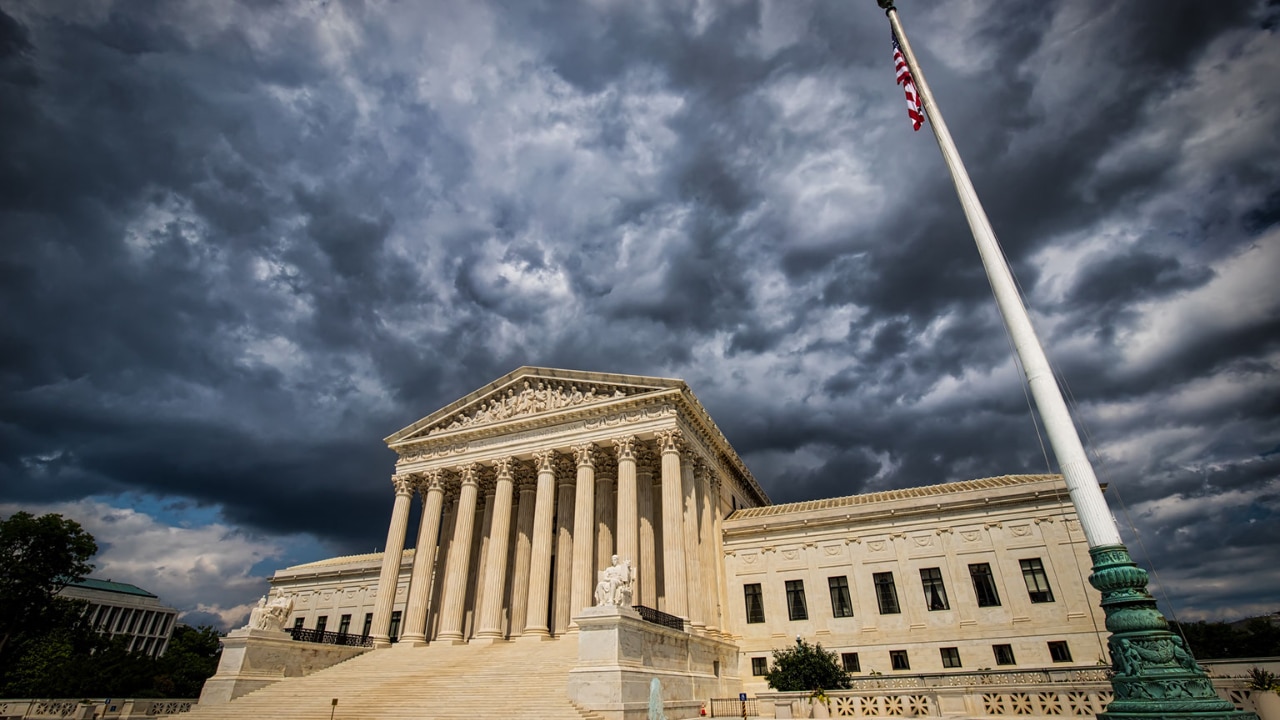If you have read my Epoch Times series, “How the Supreme Court Rewrote the Constitution,” you know that the justices have stretched some of the Constitution’s terms greatly to support the federal government’s unlimited hunger for power. Among the victims of this distortion (besides the American people) are the Taxation Clause (Article I, Section 8, Clause 1), the Commerce Clause (Article I, Section 8, Clause 3), and the Necessary and Proper Clause (Article I, Section 8, Clause 18).
But there’s another aspect of the court’s decisions that I mentioned only briefly in the series. This is the adoption of a strange concept called “the doctrine of inherent sovereign authority.” When the court believes that even its modern version of the Constitution doesn’t support a federal exercise of power, it nevertheless may uphold that exercise under the doctrine of inherent sovereign authority.
The justices don’t resort to the doctrine often. But they do so often enough to make it part of every law school course in constitutional law. It happened again this year. More on that below.
The ‘History’ Behind Inherent Sovereign Authority
The doctrine is based on its own unique version of Founding-era history. According to this version, the states were never sovereign. The Second Continental Congress (1775–1781) started exercising powers over foreign and Indian affairs even before Independence was declared. When the Declaration of Independence was issued on July 4, 1776, sovereign authority vested permanently in Congress. When the Articles of Confederation were adopted in 1781, this sovereignty passed directly to the Confederation Congress. In 1789, the Confederation Congress handed it over to the new federal government.
Thus, the federal government obtained certain powers in a way that bypassed the Constitution entirely.
Or so the story goes.
Now, you may think this narrative directly contradicts the language of the 10th Amendment. And you would be correct. The 10th Amendment says, “The powers not delegated to the United States by the Constitution, nor prohibited by it to the States, are reserved to the States respectively, or to the people.” In 1907 the Supreme Court held that the clear words of the 10th Amendment ruled out the doctrine of inherent sovereign authority.
The Illusion That Wouldn’t Die
Despite the 10th Amendment and the court’s 1907 ruling, the drive toward centralized power proved relentless. In 1936, President Franklin D. Roosevelt issued a foreign affairs order the court apparently believed the Constitution didn’t justify. So the justices upheld the order by claiming the president was exercising inherent sovereign authority.
But the justices weren’t reading the Constitution correctly. If they had examined Article II in its historical and legal context, they would have seen that it actually authorized the president to issue the order. There was no need to invent a source of extra-constitutional power. In 1957, the court considered a statute that withdrew citizenship from people who voted in foreign elections. The tribunal couldn’t find any other way to uphold the statute, so it defaulted to “inherent sovereign authority.” Fortunately, a decade later the justices overruled that part of the case and firmly reiterated that the central government was limited to the powers the Constitution gives it. Still the illusion wouldn’t die.
In 2004, Justice Stephen Breyer used “inherent sovereign authority” to buttress Congress’s power over Indian affairs. In 2012, Justices Anthony Kennedy and Antonin Scalia employed it to uphold Congress’s power to restrict immigration. This last holding was also based on an inaccurate reading of the Constitution. Unbeknownst to Justices Kennedy and Scalia, the Constitution’s Define and Punish Clause (Article I, Section 8, Clause 10) gives Congress power to restrict immigration. There was no need to resort to “inherent sovereign authority.”
Finally, the court returned to inherent sovereign authority this year to increase yet again Congress’s governance of Indian affairs. The case was Haaland v. Brackeen.
What I Learned About ‘Inherent Sovereign Authority’
This year I turned my academic research to the doctrine of inherent sovereign authority, and recently produced a paper summarizing my findings.
This is what my research taught me:
First: The doctrine of inherent sovereign authority is based on a logical fallacy—the fallacy that logicians call by its Latin name, petitio principii. The English title is “begging the question.”
“Begging the question” doesn’t mean, as often assumed, “raising the question.” Rather, it means that one’s conclusion assumes the truth of a disputed premise. Those advancing the doctrine of inherent sovereign authority assume that because British sovereignty over the American colonies ended on July 4, 1776, that sovereignty passed to the Continental Congress. This overlooks other possibilities: Perhaps sovereignty just lapsed, or passed directly to the people, or passed to the individual states.
Second: The doctrine is based on incorrect readings of the Declaration of Independence, the Articles of Confederation, and the 1783 Treaty of Paris (recognizing American independence). Correct readings show that when Independence was declared, ultimate sovereignty passed to the states. The Continental Congress was wholly a creature of the states, and it did what the states directed.
Furthermore, the Articles of Confederation made clear that the states were the ultimate sovereigns, as did the Treaty of Paris.
Third: The version of history promoted by the doctrine’s advocates is pure fiction. The terms of the Articles of Confederation explicitly ruled out any powers deriving from any source but the Articles themselves. There’s no evidence the Confederation Congress transferred its power to the new federal government, and, anyway, certain time gaps prevented that from happening.
The paper calls on the Supreme Court and constitutional writers to abandon the inherent sovereign authority doctrine and stick to the Constitution.
Update: The research article discussing this issue has now been published by a scholarly law journal. It is located here (pdf form) and here (html form).
This essay first appeared in the October 9, 2023 Epoch Times.




